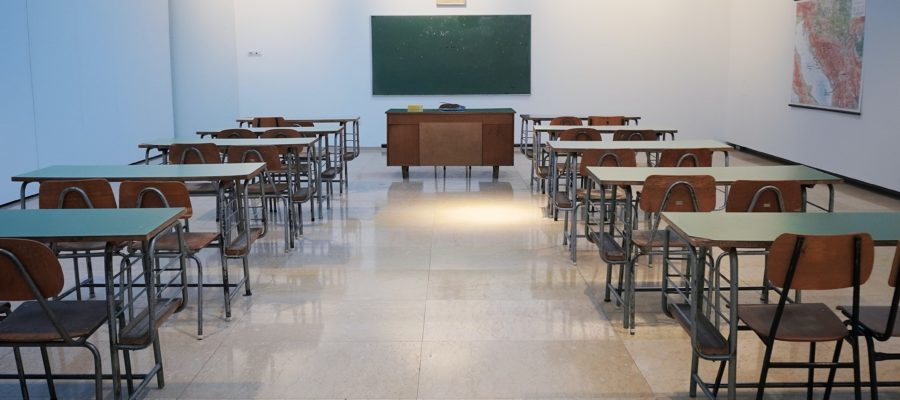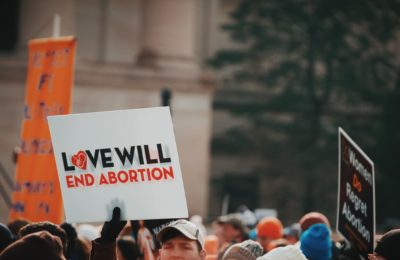COVID-19 Relief and Saving Catholic Schools
May 29, 2020 | Published first in Public Discourse
The COVID-19 pandemic and subsequent lockdown have significantly disrupted the education of every schoolchild in America. Students, families, and schools are scrambling to envision what “back to school” might look like, especially in communities ravaged by sudden economic collapse. For these communities, the practical problems—figuring out masks, sanitizing classrooms, and delivering flexible instruction using online technology—are not their most pressing concerns. Funding is. This is especially true for the 10 percent of American schoolchildren whose schools are not funded by the government, including those who attend Catholic schools.
Pause for a moment to consider the numbers. There are nearly 6 million American children of elementary and high school age who are not enrolled in government schools. Roughly 2 million of these students are in Catholic schools. Put differently, the number of children educated in Catholic schools is larger than the population of Phoenix (1.7 million) or Philadelphia (1.5 million). There are more children in Catholic schools nationwide than the populations of Washington, D.C. and Denver, Colorado, combined. None of us would ignore a crisis affecting the populations of any one of those cities. But today, an educational crisis is looming that will affect even greater numbers, as the viability of Catholic schools is seriously threatened.
Take a moment as well to appreciate why it is so vital to assist families whose children are educated outside the government school system. Catholic schools are a consistent success story in the often mediocre “big picture” of American education. Catholics, of course, find the deepest benefit in the religious aspect of Catholic education, as our children are nurtured in faith, and love for God and the Church. The intellectual and moral discipline developed through studying the faith and putting it into practice lay the foundation for a lifetime of faithful citizenship and service.
For over seventy years, Catholic schools have played an essential role in our country’s educational “supply chain,” delivering on the promise to provide all enrolled students—Catholic and non-Catholic alike—with a sound formation in character and virtue, as well as excellent academics. Catholic schools continue to deliver for America, as children educated in Catholic schools consistently outperform their public school peers. In addition, Catholic schools have an outstanding record of serving America’s urban poor, providing the most disadvantaged students with a ladder out of poverty and a springboard to success. Since the beginning of the pandemic, Catholic schools have navigated distance learning remarkably well, fostering community while addressing practical difficulties including access to laptops and internet for students of all socioeconomic backgrounds. It is a remarkable success story, but the next chapter depends on all of these students’, Catholic and non-Catholic, being able to continue their educations uninterrupted, in the schools of their choice, including Catholic schools.
That prospect is becoming rapidly less certain by the day. Most Catholic schools depend on the tuitions paid by the parents of enrolled children, backstopped by generous donors, scholarships, and limited parish or diocesan reserves. Those dollars are drying up like water in the desert.
On May 15, the Archdiocese of St. Louis announced it would be closing three Catholic elementary schools because of “financial losses from the coronavirus pandemic.” Catholic schools in Houston, Texas, Camden, New Jersey, and Fall River, Massachusetts, are closing as well, for similar reasons. Even Catholic schools that began the year in the black are at risk, with out-of-work families unable to pay tuition and parishes facing their own financial crisis, after being shut for two months with no weekly collections. The pandemic’s economic crisis is now an education crisis, threatening the educational futures of millions of schoolchildren and the survival of Catholic schools.
The coronavirus shutdown delivered a sledgehammer blow to local economies, throwing over 36 million people out of work nationwide, decimating state budgets, and reducing state and local tax revenues (essential means of support for government-run schools) to a trickle. No school—whether taxpayer-funded or independent—can run without money to pay teachers and keep the lights on. The education lobby knows this. It is in a full-court press to score billions in federal funding for government schools and related pet projects. Their concerns, however, seem to extend only to the children enrolled in government schools. But the same lockdown that created the budget shortfalls for government-run schools has destroyed the livelihoods and financial reserves of many parents whose kids were thriving in faith-based, tuition-dependent schools. Their hard-earned salaries, once adequate to cover monthly tuition payments to Catholic schools, are in jeopardy, if not gone already.
Families who pay twice for education—first through their taxes, which underwrite government schools for other families who choose that option and, second, through the tuition they pay to the faith-based schools they’ve chosen as the best option for their own children—have no powerful lobby to go to bat for them. The NEA, in contrast, has begun a $1.6 million ad campaign pressuring Congress to turn the spigot on and keep federal funds flowing, but only to government schools. No matter that students in faith-based schools have had their school year turned completely upside down by the virus. No matter that many of their families are suddenly in serious financial difficulty. No matter that their families’ tax dollars are funding other people’s educations in government schools. No matter that the students enrolled in Catholic schools save the government $24 billion a year in costs (and they gain a better education). No matter that government schools could never effectively absorb all the kids being educated in non-public schools, if those non-public schools disappeared.
So where is the federal funding to help these children stay in school and to help their families sustain their children’s education? (Only 35 percent of Catholic schools received funding through the Payment Protection Plan, according to the Catholic News Service, but even those funds cannot sustain the schools into the new year.)
The same day the Archdiocese of St. Louis announced the school closures, the US House of Representatives passed the HEROES Act, a $3 trillion dollar stimulus that includes, according to EdWeek, “$100 billion for K–12 and higher education, $915 billion in state and local aid that could be used to help schools, and $1.5 billion to expand student access to the internet.” Back in St. Louis, the school closures came as a terrible blow to the families at Most Holy Trinity, a Catholic school with a 160-year history of serving St. Louis students. The school serves a predominantly low-income, minority community, whose families were grateful for the chance to enroll their children in Catholic school. Evie Moore, a mother interviewed by the St. Louis Post-Dispatch, described Most Holy Trinity as “a light.” She worries that “they’re about to displace these students. In the middle of a pandemic, we have to figure out where to send our children to school. If you stay in this neighborhood, you’re not going to have many options.”
It turns out the HEROES Act is rather heartless towards parents like Evie Moore (and her daughters) who depend on Catholic schools. The school superintendents’ lobby (ASSA) boasts that the HEROES Act includes specific language “reigning in [sic]” the Department of Education’s efforts to extend some limited assistance to students in non-public schools. Yes, even as the progressive education establishment is seeking billions and billions of dollars in federal funds for government schools, they are doubling down in their opposition towards giving any aid to families outside their monopolistic control.
Surely Americans can come together and prioritize federal aid to assist allschoolchildren. Surely we can come together to ensure that all children have the support they need to get back to the business of learning, with the teachers they love, and in the schools where they flourish. Surely Congress would support the administration in extending that financial lifeline to stabilize the independent educational “supply chain,” not just the state-run supply chain, because both provide an essential service—education—for America’s students.
Whether through grants to state education agencies to fund government schools or grants directly to parents whose children rely on faith-based or independent schools, the objective is the same: to ensure that the vital mission of educating the next generation continues. Catholic schools are an irreplaceable part of that mission. That was the message that Cardinal Dolan, Cardinal O’Malley, Bishop Barber, and others sought to emphasize to President Trump in a call with him and other Catholic education leaders on April 25. Catholic schools, along with other faith-based schools, are a vital gift to the families they serve and to our country. It’s time to support the educational choices of all families, and to save Catholic schools.
Copyright 2020 Public Discourse. All rights reserved. Reprinted with permission.
Image: Photo by Ivan Aleksic on Unsplash



